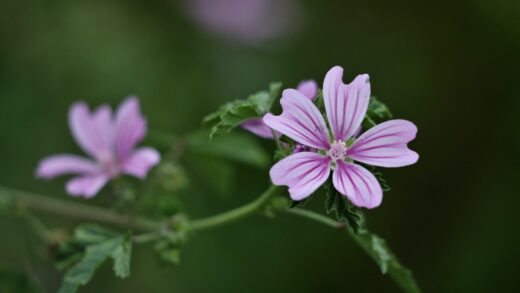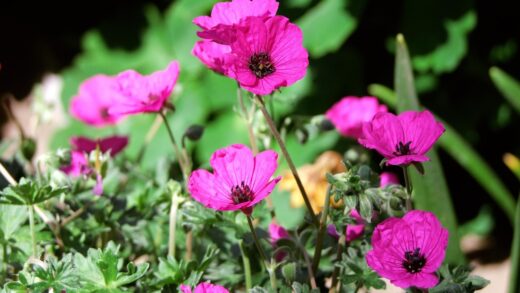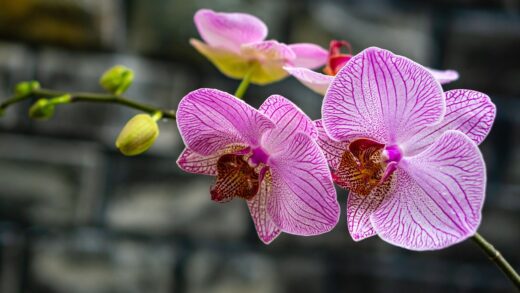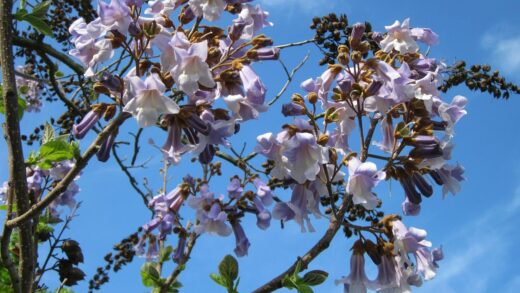Pruning is arguably the most crucial maintenance task for ensuring the long-term health, vigor, and aesthetic appeal of alpine heath. While this might seem counterintuitive for such a low-maintenance plant, a single, well-timed annual shearing is the secret to preventing it from becoming a woody, sparse, and unattractive specimen. The primary goal of pruning Erica carnea is not to control its size, but to maintain its dense, cushion-like habit and to maximize its flowering potential for the following season. By removing the old, faded flower stems, you encourage the plant to produce a flush of fresh new growth, upon which the next winter’s flower buds will form. Mastering this simple yet vital technique will keep your heath looking youthful and vibrant for many years.
The fundamental reason for pruning alpine heath is to combat its natural tendency to become woody with age. If left unpruned, the plant will continue to grow from the tips of its stems each year. Over time, the lower and inner parts of these stems become bare and woody, with all the green foliage concentrated at the ends. This results in a plant that is open and gappy in the center, a condition often described as “leggy.” This not only looks unattractive but also reduces the plant’s overall vigor and flower production. Annual pruning effectively resets the growth each year, keeping the foliage dense and close to the ground.
This pruning process directly stimulates the production of new shoots from lower down on the stems. After the faded flowers are removed, the plant redirects its energy into developing multiple new growth points just below the cuts. This results in a much bushier and more compact plant. It is this new growth, produced in the spring and summer, that will carry the flower buds for the following winter. Therefore, by pruning correctly, you are not just tidying the plant, but you are actively creating the framework for a more spectacular floral display in the future.
It is important to understand that this type of pruning is a regular, preventative maintenance task, not a corrective one for severely overgrown plants. Once an alpine heath has become very old and woody, with thick, bare stems at its base, it is very difficult to rejuvenate it with pruning alone. The old wood often does not have dormant buds and may not regrow if cut back too hard. This is why a consistent, light, annual prune is so much more effective than infrequent, hard cutting back. It is a small investment of time each year that pays huge dividends in the plant’s longevity and appearance.
The purpose and benefits of pruning
The primary purpose of pruning alpine heath is to maintain a desirable compact and mounding form. The annual shearing removes the spent flower stalks and encourages the plant to branch out, resulting in a dense, tight habit that effectively covers the ground. This not only enhances the plant’s appearance, creating a neat and tidy cushion of foliage, but it also improves its function as a groundcover. A dense mat of heath is highly effective at suppressing weeds, reducing the need for manual weeding and contributing to a lower-maintenance garden.
More articles on this topic
A significant benefit of this annual trim is the enhancement of flower production. Alpine heath flowers on wood that was produced in the previous growing season. By shearing the plant back after flowering, you stimulate a flush of new growth throughout the spring and summer. This abundance of new stems provides a much larger surface area for the development of flower buds in the autumn. The result is a plant that is more uniformly and prolifically covered in blooms the following winter, compared to an unpruned specimen which will have flowers only at the tips of its long stems.
Pruning also contributes to the overall health of the plant. The removal of the old flower heads prevents the plant from wasting energy on seed production, redirecting that energy instead into root and foliage development. The process of shearing also improves air circulation through the plant by preventing it from becoming overly congested. This increased airflow helps the foliage to dry more quickly after rain, which can reduce the incidence of fungal diseases. It is also an opportunity to remove any small, dead, or damaged branches that may have occurred over the winter.
Finally, regular pruning is a form of rejuvenation that extends the attractive lifespan of the plant. An unpruned Erica carnea can start to look old and woody in just a few years. By consistently encouraging new growth from the base, you keep the plant in a more juvenile state, ensuring it remains a vibrant and valuable component of your garden design for a decade or more. This simple annual task is the key to preventing the premature decline of the plant and maintaining its aesthetic contribution to the garden.
The ideal timing for pruning alpine heath
Timing is the most critical element of successful pruning for Erica carnea. There is a specific and relatively narrow window of opportunity for this task, and getting it right is essential for the health of the plant and for future flowering. The correct time to prune is immediately after the plant has finished flowering in the spring. Depending on the specific cultivar and your local climate, this will typically be sometime between late March and early May. The golden rule is to prune as soon as the last flowers have faded and started to turn brown, but before significant new leafy growth has begun to appear.
More articles on this topic
Pruning at this specific time achieves two important goals. Firstly, it allows you to enjoy the full duration of the flower display throughout the winter and early spring. Pruning too early would mean sacrificing the end of the blooming period. Secondly, and more importantly, it gives the plant the entire spring and summer growing season to produce and mature the new growth that will carry the following year’s flowers. This long recovery period is crucial for the plant to build up the energy reserves needed for bud formation.
Pruning too late in the season is one of the most common mistakes and can have serious consequences. If you wait until mid-summer or autumn to prune, you will be cutting off the new growth that has already developed the flower buds for the upcoming winter. This will result in a complete lack of flowers for the next season. Late-season pruning can also stimulate a flush of tender new growth that will not have time to harden off before the first frosts, making it susceptible to winter damage.
Therefore, it is vital to be observant and act promptly once the flowering season is over. Mark it on your calendar as a key spring task. As the vibrant pinks, purples, and whites of the flowers begin to fade to a uniform brown, that is your signal to get out the shears. Delaying the task by even a few weeks can start to compromise the following year’s display. A prompt, post-flowering trim sets the plant up for a successful cycle of growth and bloom.
Proper techniques for effective shearing
The technique for pruning alpine heath is straightforward and does not require intricate, stem-by-stem cutting. The most effective tool for the job is a pair of hand shears or hedge shears. These allow you to trim the entire plant quickly and uniformly, much like giving it a haircut. The goal is to remove all the faded flower stalks, cutting back to a point just below the old flowers and into the top of the leafy growth from the previous year. This typically means removing just a few centimeters from the top of the plant.
When shearing, try to follow the natural mounding shape of the plant. Trim the sides as well as the top to maintain a neat, rounded or cushion-like form. Avoid cutting a flat top, as this can look unnatural and may cause snow to accumulate heavily in the center of the plant. The aim is to give the plant an all-over light trim that removes the spent flowers and encourages branching from all sides, reinforcing its dense, low-growing habit.
It is crucial to avoid cutting back too far into old, bare wood. Erica carnea, like many heathers, does not reliably produce new growth from old, thick stems that have no foliage on them. Your cuts should always be made into the upper part of the plant where there is still plenty of green, leafy growth. If you look closely, you can see the distinction between the current season’s growth and the older, woodier stems below. Always stay within the top, leafy portion of the plant to ensure it will regrow vigorously.
After shearing, it is good practice to clean up all the clippings from around and within the plant. This improves the plant’s appearance and removes material that could harbor diseases as it decomposes. A gentle shake of the plant can help to dislodge any clippings that have fallen inside. After the cleanup, a light watering can help the plant to settle and wash away any remaining small debris, setting the stage for a strong flush of new growth.
Avoiding common pruning mistakes
The most frequent and detrimental pruning mistake is incorrect timing. As emphasized previously, pruning in the summer or autumn is a critical error that will sacrifice the next season’s flowers. Gardeners who are unfamiliar with the specific needs of winter-flowering heath may mistakenly treat it like a summer-flowering shrub and prune it in late winter or early spring before it blooms. This is equally incorrect, as it removes the flower buds just as they are about to open. The rule is simple and absolute: only prune Erica carnea immediately after it has finished flowering.
Another common mistake is pruning too hard. The desire to reduce the size of a slightly overgrown plant can tempt gardeners to cut back severely into the old, woody framework at the base. This is highly risky. Unlike many other shrubs that can be rejuvenated by cutting them back to the ground, alpine heath will often not recover from such drastic treatment. The old wood lacks dormant buds and is unlikely to sprout new growth. This is why a light, annual shearing is so important—it prevents the plant from ever reaching a state where you might be tempted to perform such a hard and risky pruning.
Conversely, not pruning at all is also a mistake that leads to the plant’s decline. An unpruned heath will inevitably become leggy and woody, with a sparse center and reduced flowering. Many gardeners assume that because it is a low-maintenance plant, it needs no intervention. While it is certainly tough, foregoing the annual trim will shorten its attractive lifespan significantly. Skipping the prune for one year is not a disaster, but making a habit of it will lead to a gradual deterioration of the plant’s form and performance.
Finally, using the wrong tools or poor technique can lead to a messy result. Using secateurs to snip at individual stems is time-consuming and results in an uneven finish. Hand shears or hedge shears are the right tools for the job, allowing for a swift and uniform trim. Ensure your tools are sharp and clean. Sharp blades make clean cuts that heal quickly, while dull blades can crush and tear the stems, creating entry points for disease. Cleaning your tools before and after use also prevents the potential spread of pathogens from one plant to another.
Rejuvenation pruning for older, woody plants
Dealing with an old, neglected alpine heath that has become very woody and has a large, bare center is a significant challenge. Standard annual shearing is not sufficient to correct this problem, and a more drastic approach, known as rejuvenation pruning, may be considered, though it comes with no guarantee of success. This technique is a last-ditch effort to stimulate new growth from the base of a plant that is otherwise destined for the compost heap. It should only be attempted in the spring, after flowering, to give the plant the longest possible growing season to recover.
The process involves cutting back some of the oldest, thickest stems harder than usual. Instead of just trimming the leafy tips, you would follow these stems back and cut them to a point lower down, looking for any small side shoots or latent buds. The goal is to reduce the overall framework of the plant, hoping that the shock will stimulate new basal growth. However, you should never cut the entire plant back to the ground. A safer approach is to do this gradually over two or three years, cutting back about a third of the oldest stems each spring.
A much safer and more reliable method of “rejuvenating” an old patch of heath is through propagation rather than pruning. Before you attempt any risky cutting, use the layering technique on some of the outer, more pliable stems. Peg these stems down to the ground in the spring, and by the following year, they will have formed new, independent plants. You can then remove the old, woody parent plant and replace it with its fresh, vigorous offspring, effectively renewing the planting without the risk of losing it entirely.
Ultimately, it is important to accept that alpine heath has a finite lifespan, and after 10 to 15 years, even a well-cared-for plant may begin to decline. In many cases, the best and easiest course of action for a very old and woody plant is simply to remove it and start again with a new one. Given that Erica carnea is relatively inexpensive and grows quickly, replacement is often a more practical and satisfying solution than a lengthy and uncertain rejuvenation process. Focusing on consistent annual pruning from the start is the best way to delay this eventuality for as long as possible.


















